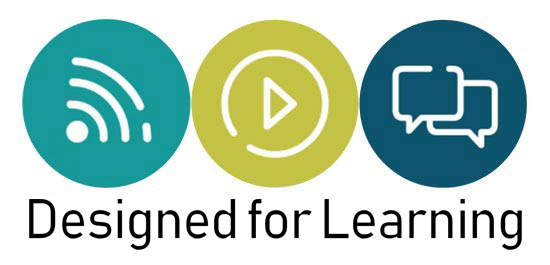
14 Feb Who decides what employees need to learn?
Most learning needs analysis (LNA) is top down and most of my clients come to me with the LNA already done. They have decided that a certain group of employees need to learn a certain thing. It could be about a new procedure, a new product line, a new approach or some new compliance issue that they need to address. Invariably in most of these cases what they really want is for employees to know stuff, not actually learn how to do something. What’s the difference you ask? If people know stuff then they will act differently surely? Sadly learning isn’t so simple as trying to cram stuff into people’s heads. At least not in the workplace.
Strangely the one thing they often haven’t done, or have done only superficially, is to actually ask employees what they think they need to learn. Asking this, in the right context, is likely to give a much better understanding of the performance issue rather than the knowledge gap issue. The performance issue may be related to a lack of knowledge (e.g. around a specific product or procedure) but it might also result from an indirect cause (e.g. our IT system undermines our ability to follow the procedure appropriately). Cathy Moore’s Action Mapping has long been a useful tool to help uncover what people need to learn rather than what they need to know, and one core element of action mapping is the challenge to the LNA – is this learning intervention really needed at all? Is the issue actually in the environment (systems, process, culture etc.)?
On client projects the actual learners are often the only people I don’t get to speak with. That’s a real shame.






Clarissa Shanahan
Posted at 13:37h, 18 FebruaryIt’s rare to find such thoughtful and well-researched content, excellent job.
Carolyn Klein
Posted at 07:33h, 21 FebruaryYour blog is a constant source of inspiration.
craft porn
Posted at 07:40h, 21 Februarychildrens sex pokkerx.0ECCdtqNd4YB
sexax
Posted at 07:52h, 21 Februaryamciik siteleri footballxx.kfI2SQRBuN5b
BİZİ SİK BİZ BUNU HAK EDİYORUZ
Posted at 07:56h, 21 Februarypornhub bahis siteleri mobileidn.4sS1gN0FvEz0
bahis siteleri incest category
Posted at 08:02h, 21 Februaryporn siteleri bingoxx.8LPoDfjXx82j
eski rahatiniz olmayacak
Posted at 08:28h, 21 Februaryanal siteleri 250tldenemebonusuxx.2mSunx4hcoIv
bahis siteleri porn
Posted at 10:36h, 21 Februaryporn eyeconartxx.QzzdAD8Ew5ht
porn siteleri
Posted at 16:52h, 22 Februaryescort siteleri vvsetohimalxxvc.kJzLovtqvmKW
food porn
Posted at 20:53h, 23 Februaryfuck tthighereduhryyy.9ldZaxibxjx
AeroSlim Weight loss reviews
Posted at 02:05h, 26 FebruaryI was suggested this web site by my cousin Im not sure whether this post is written by him as no one else know such detailed about my trouble You are incredible Thanks
Fitspresso Reviews
Posted at 18:51h, 04 MarchWhat i do not understood is in truth how you are not actually a lot more smartlyliked than you may be now You are very intelligent You realize therefore significantly in the case of this topic produced me individually imagine it from numerous numerous angles Its like men and women dont seem to be fascinated until it is one thing to do with Woman gaga Your own stuffs nice All the time care for it up
Fitspresso Reviews
Posted at 16:00h, 05 MarchI do agree with all the ideas you have introduced on your post They are very convincing and will definitely work Still the posts are very short for newbies May just you please prolong them a little from subsequent time Thank you for the post
www.porn hd video download
Posted at 15:41h, 13 Marchwww porn free video ggjinnysflogg.jCnIp4EJJ9k
Roxane Conroy
Posted at 04:36h, 19 MarchI never thought about it that way before, what an interesting perspective.
Mag-sign up upang makakuha ng 100 USDT
Posted at 14:13h, 20 MarchThank you for your sharing. I am worried that I lack creative ideas. It is your article that makes me full of hope. Thank you. But, I have a question, can you help me?
fashionflag free full hd porn
Posted at 08:20h, 27 Marchfashionflag 4k sex video download fashionflag.ayYXQEdCuXu
goodhere Missionary Style porn
Posted at 04:42h, 28 Marchgoodhere Big Tits porn vurucutewet.KR6k01s8tb7
ladyandtherose Mature (40 ) porn
Posted at 08:09h, 28 Marchladyandtherose Hardcore porn backlinkseox.9yNXMoYEmcw
jenniferroy 漫画ポルノ
Posted at 14:46h, 28 Marchjenniferroy 同性愛者のポルノ japanesexxporns.Sm6oDEVUb23
landuse Arab porn
Posted at 07:30h, 29 Marchlanduse Toys porn lancdcuse.uHJaB4HflBQ
falbobrospizzamadison Random porn
Posted at 14:34h, 29 Marchfalbobrospizzamadison Black and White porn jkkıjxxx.JNbh34f1ZDG
विंटेज अश्लील
Posted at 06:56h, 30 Marchमुखमैथुन अश्लील qqyyooppxx.bJH19pYwAjD
गुदा अश्लीलता के बारे में बतावल गइल बा
Posted at 14:59h, 30 Marchपीओवी पोर्न के बा hjkvbasdfzxzz.do0XAoTxaO9
Michelle Daniel
Posted at 23:01h, 31 MarchYour articles never fail to captivate me. Each one is a testament to your expertise and dedication to your craft. Thank you for sharing your wisdom with the world.
श्वेत-श्याम अश्लीलता
Posted at 11:20h, 01 Aprilमुख-मैथुन अश्लील साहित्य txechdyzxca.QX2HvxHEIDC
बड़ा गधा अश्लील
Posted at 18:43h, 02 Aprilविंटेज पोर्न hkyonet.mP6HP05FrT6
ਪੋਰਨ ਕਾਸਟਿੰਗ ਕੀਤੀ ਜਾਂਦੀ ਹੈ
Posted at 16:21h, 03 Aprilਮਿਸ਼ਨਰੀ ਸ਼ੈਲੀ ਪੋਰਨ madisonivysex.sw4nj2zMetp
ladesbet ਗੇ ਪੋਰਨ
Posted at 05:48h, 05 Aprilladesbet ਲਾਤੀਨੀ ਪੋਰਨੋਗ੍ਰਾਫੀ ladesinemi.wV1Niwnkvmi
ladesbet 漫画ポルノ
Posted at 07:28h, 05 Aprilladesbet 面白いポルノ ladestinemi.qnp4vFNkwKe